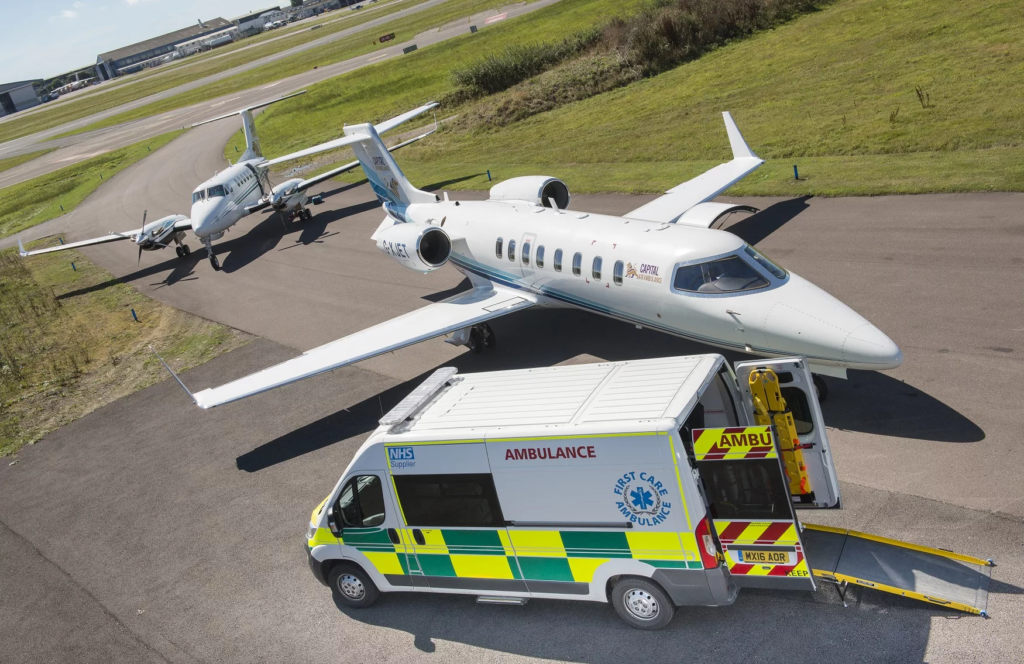Discover how air ambulance services in India like Lifewings ensure life-saving emergency medical transport with speed, care, and nationwide reach.

In a country as vast and diverse as India, where geographical challenges and infrastructural limitations often hinder timely medical care, air ambulance services have emerged as a critical component of the healthcare system. These services bridge the gap between remote areas and advanced medical facilities, ensuring that patients receive prompt and specialized care when every second counts.
Understanding Air Ambulance Services
Air ambulance services involve the use of aircraft—ranging from helicopters to fixed-wing planes—equipped with medical equipment and staffed by trained medical professionals to transport patients in critical conditions. These services are essential for:
- Rapid Transportation: Covering long distances in a fraction of the time compared to ground ambulances.
- Access to Remote Areas: Reaching regions with limited or no access to advanced medical facilities.
- Specialized Care: Providing in-transit medical care for patients requiring intensive monitoring and treatment.
The Growing Need in India
India’s diverse topography, including mountainous regions, dense forests, and vast rural areas, often poses challenges for ground transportation. In emergencies, delays can be fatal. Air ambulance services address these challenges by:
- Reducing Transit Time: Ensuring patients reach medical facilities swiftly.
- Overcoming Infrastructure Gaps: Bypassing poor road conditions and traffic congestion.
- Facilitating Inter-Hospital Transfers: Moving patients between facilities for specialized treatments.
Lifewings Air Ambulance: A Commitment to Excellence
Established in 2014, Lifewings Air Ambulance has been at the forefront of providing reliable and efficient air ambulance services across India. With a mission to deliver “Care Like a Family,” Lifewings offers:
- Comprehensive Services: Including air, train, and road ambulance options to cater to diverse needs.
- Advanced Medical Equipment: Ensuring patients receive critical care during transit.
- Experienced Medical Staff: A team of trained professionals dedicated to patient well-being.
- Nationwide Reach: Serving patients across the country, regardless of location.
Real-Life Impact
Consider the case of a patient in a remote village in Uttarakhand suffering from a severe cardiac condition. With the nearest specialized hospital hours away by road, an air ambulance becomes the lifeline, ensuring the patient receives timely intervention, thereby increasing the chances of survival.
Challenges and the Way Forward
While the benefits are clear, air ambulance services in India face challenges such as:
- Cost: High operational expenses can make services expensive for patients.
- Regulatory Hurdles: Navigating aviation and healthcare regulations can be complex.
- Awareness: Limited public knowledge about the availability and benefits of air ambulance services.
Addressing these challenges requires collaborative efforts between service providers, government agencies, and the healthcare community to:
- Subsidize Costs: Making services more affordable through government schemes and insurance coverage.
- Streamline Regulations: Simplifying procedures to facilitate quicker response times.
- Enhance Awareness: Educating the public about the availability and utility of air ambulance services.
Conclusion
Air ambulance services are not just a luxury but a necessity in India’s multifaceted healthcare landscape. They play a pivotal role in ensuring equitable access to emergency medical care, transcending geographical and infrastructural barriers. As the demand for such services grows, it’s imperative to support and enhance their integration into the broader healthcare system, ensuring that timely and efficient medical care is accessible to all, regardless of location.

